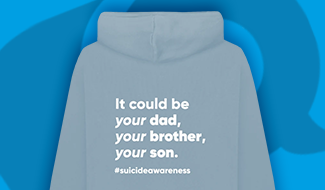All children are affetced by family breakdown. In most families, both parents work together to help their children adjust to a new way of being, and to minimise the negative emotional impact. In a minority of families, this does not happen. Adjustment to a healthy post separation life can be difficult where there was prior domestic violence, abuse or inadequate parenting by one or both parents. Parental alienation is a particular type of adjustment difficulty where there was no prior exposure to domestic violence, abuse or significantly poor parenting. Other labels which have been applied to this concept including Hostile Aggressive Parenting (HAP), Implacable Hostility, Attachment Based Parental Alienation (AB-PA), Parental Alienation Syndrome (PAS) and the Resist/ Refuse Dynamic.
Parental alienation is a particular type of adjustment difficulty where there was no prior exposure to domestic violence, abuse or significantly poor parenting.
Parental alienation refers to a situation where a child appears resistant to an ongoing relationship with a parent despite having had a “good- enough”, loving relationship prior to the family breakdown. Their resistance is a disproportionate response when the entirety of their experience is considered. This is the child’s coping strategy. When one loving, caring parent tells a child that mum or dad is dangerous, nasty or doesn’t love them – this causes a psychological tension in the child. This doesn’t make sense – but their parent wouldn’t lie to them would they? These conflicting messages are difficult to process for a young child whose brain development is not yet complete. Children quickly become aware that the less often they see their parent, the less often they feel anxious or upset. This is not usually a conscious process, particularly in younger children. A child will develop a narrative that gives a plausible explanation for not wanting to spend time with their mum or dad. This narrative is created with input – information, stories, non-verbal communication- from the present parent.
Children’s brains are wired at birth to ensure they attach to their parents. This attachment is necessary for survival; it ensures that a child has its basic needs met. A child attaches to a caregiver regardless of the quality of care received, even if the caregiver is abusive and neglectful. When a child states they do not wish to see a parent- or they hate them – this is a clear indication that something is amiss. Is this child rejecting an abusive parent? This is known as estrangement and is an adaptive coping mechanism for the child to protect themselves. Or are they rejecting a loving parent due to the alienation process? This would be a maladaptive strategy. When alienated, children may appear to function well. However, continued use of this maladaptive strategy over time means they are likely to have an impaired ability to sustain effective, healthy realtionships throughout their life as well as an increased incidence of mental helath and psychiatric disorders and substance misuse.
Both estrangement and alienation are signs of underlying psychological distress. If we do not understand why a child is resistant to a relationship with one of their parents, we risk the child remaining in a harmful, psychologically abusive environment. Fortunately, with a good understanding of abuse, parental alienation and normal and abnormal child development, it is possible to differentiate between estrangement and alienation.
Children, particularly young children, who experience what is usually considered abuse – physical, sexual, emotional maltreatment – or neglect, rarely reject their parent. In fact, these children crave an ongoing relationship with an abusive parent. They are torn. They are ambivalent. A lack of ambivalence, psychological splitting, where the child idealises one parent and devalues the other, has been shown to differentiate between alienation and estrangement (Bernet, Gregory, Reay, & Rohner, 2017). An alienated child will have an overly close relationship with one parent, while rejecting the other. Often this polarisation extends to the wider family.
Alongside their rejection, a child may appear fearful or overly anxious. They may be verbally or physically abusive, while not demonstrating any remorse or guilt for their behaviour. Children will often suggest trivial reasons for not wanting to see their parent, insisting that their “decision” is their own, not otherwise influenced. Alienated children may speak with adult language, sometimes with a rehearsed or coached quality. They may talk about matters which should not be in their awareness, such as the financial matters or incidents prior to their birth or cognitive awareness. These symptomatic behaviours and the underlying psychological processes in alienation have been independently identified since the 1980s by researchers and practitioners in social work, law and psychology (Baker & Darnall, 2006; Baker, 2005; Clawar & Rivlin, 1991; Dunne & Hedrick, 1994; Gardner, 1985; Johnston, Campbell, & Mayes, 1985; Kelly & Johnston, 2001; Kopetski, 1998; Wallerstein & Kelly, 1980).
In the alienation process one parent engages in behaviours which foster the fracturing of the child’s relationship with the other. These behaviours have also been the subject of much research (Baker & Verrocchio, 2016; Harman, Biringen, Ratajack, Outland, & Kraus, 2016; Verrocchio, Baker, & Bernet, 2016; Verrocchio, Marchetti, & Fulcheri, 2015). Typical behaviours include bad- mouthing a parent, suggesting they are dangerous or have abandoned the child. These messages are reinforced by the removal of photographs and other signs of the absent parent from the home, with no positive dialogue about the parent or their relationship with the child. Children pick up on these messages; they are attuned to the behaviour and body language of their parents. Parents may withhold affection, exhibit excessive anxiety or distress; all contribute to a child’s internalised representation of a ‘bad’ other parent or a needy, vulnerable aligned parent.
Active alienating behaviours include preventing or frustrating direct and indirect parenting time and communication between the child and parent. There may be overt pressure forcing a child to choose between its parents. Parents may be angry with a child or criticise them if they express love or enjoyment of time with their other parent. False or unsubstantiated allegations of abuse, neglect or domestic violence are common. (Bernet et al., 2015; Fidler, Bala, & Saini, 2012; Gordon, Stoffey, & Bottinelli, 2008; Siegel & Langford, 1998; Stoltz & Ney, 2002).
In assessing a child’s rejection of a parent, a full consideration of the historical and current social context of child, alongside their developmental history, behaviour and that of their parents, is necessary. This will enable an understanding of the child’s rejection – whether estrangement, alienation, or a combination of both – and inform the most appropriate intervention.
Posted on July 2, 2019
















